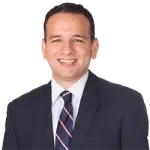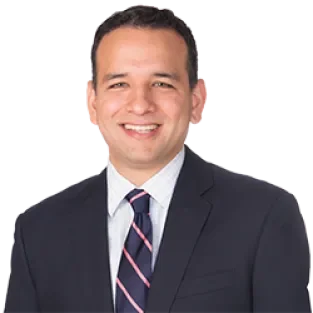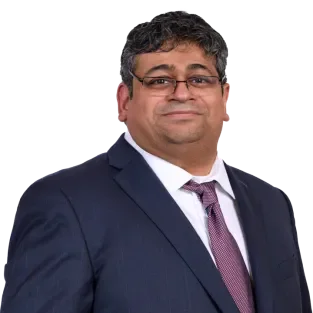ASAP
NY Agencies Issue Joint Guidance on COVID-19 Paid Leave for Health Care Workers
On May 17, 2020, the New York Department of Health (NY DOH) and the New York Department of Labor (NY DOL) issued joint Guidance pertaining to an employer’s obligation under the New York State COVID-19 Sick Leave Law (“the Law”) to provide paid sick leave to “health care employees.” Under the Law, an employee is eligible for paid sick leave only if they are subject to an actual mandatory or precautionary order of quarantine or isolation issued by an authorized government entity (“COVID-19 Order”). Under the new Guidance, the NY DOH and NY DOL appear to take the position that, contrary to what is set forth in the Law and the current regulations governing COVID-19 Orders, in the absence of a health care employees’ obtaining a COVID-19 Order there are nonetheless situations in which their employer is still obligated to provide paid sick leave under the Law.
Who is a “Health Care Employee”?
The Guidance defines a “health care employee” as:
a person employed at a doctor’s office, hospital, long-term care facility, outpatient clinic, nursing home, end stage renal disease facility, post-secondary educational institution offering health care instruction, medical school, local health department or agency, assisted living residence, adult care facility, residence for people with developmental disabilities, home health provider, emergency medical services agency, any facility that performs laboratory or medical testing, pharmacy, or any similar institution, including any permanent or temporary institution, facility, location, or site where medical services are provided that are similar to such institutions.
As this broad definition applies to “a person employed” by a health care employer, a health care employee ostensibly includes all persons employed by a health care employer regardless of occupation, including those not directly involved in providing health care.
Situations in Which a COVID-19 Order is Not Required
The Guidance provides various scenarios where an employee would be entitled to the NYS COVID-19 Sick Leave without presenting an Order. One such scenario is where an employer directs a health care employee not to work, or prohibits the employee from work, because the employer suspects or confirms that the employee has: (a) been exposed to COVID-19; (b) exhibits symptoms of COVID-19; and/or, (c) is diagnosed with COVID-19. Under this scenario, the employee “shall be deemed to be subject to a mandatory order of quarantine from the Department of Health.” The Guidance states that the health care employee is entitled to the paid sick leave under the NYS COVID-19 Sick Leave Law with no additional documentation necessary.
Another scenario where a COVID-19 Order is not required as per the Guidance is where a health care employee has tested positive for COVID-19 and/or is symptomatic for COVID-19, and the “employee must not report to work.” In this scenario, the “employee shall be deemed to be subject to a mandatory order of isolation from the Department of Health.” In this situation, the health care employee must submit documentation from a licensed medical provider that has treated the health care employee attesting that the employee has tested positive for COVID-19 and/or is symptomatic for COVID-19. The health care employee does not need to submit documentation of a positive result, however, if their employer gave the employee the test for COVID-19 that showed the positive result.
Situations in Which There is a “Staffing Shortage”
The Guidance sets forth exceptions to those situations described above. For example, an employer may require, “to the extent no other facts unrelated to COVID-19 dictate otherwise,” a health care employee who has been exposed to COVID-19 to report to work if the employer can demonstrate a “staffing shortage” and the employee meets all of the following conditions: (a) the health care employee is asymptomatic for COVID-19; (b) the employee has not tested positive for COVID-19; and (c) the employee’s contacts with confirmed or suspected cases of COVID-19 are limited to those who are asymptomatic.
Another exception in the Guidance is that an employer may require, “to the extent no other facts unrelated to COVID-19 dictate otherwise,” a health care employee who has tested positive for COVID-19 and/or has been symptomatic for COVID-19 to return to work prior to the end of a 14-day quarantine or isolation period if the employer can demonstrate a “staffing shortage” and only under these conditions: (a) the health care employee with confirmed or suspected COVID-19 must maintain isolation for at least 7 days after onset of symptoms, must be fever-free for at least 72 hours without the use of fever-reducing medications, and must have other symptoms improving before returning to work; and, (b) the employee who is asymptomatic but who has tested positive for COVID-19 must maintain isolation for at least 7 days after the date of the positive test and, if the employee develops symptoms during that time, the employee must maintain isolation for at least 7 days after developing those symptoms, must be fever-free for at least 72 hours without the use of fever-reducing medications, and must have other symptoms improving, before returning to work. This appears consistent with earlier NY DOH guidance specifying under what circumstances health care employees may return to work.
The Guidance states that an employer claiming a “staffing shortage” must demonstrate that: (a) the employer has a staffing shortage of the type of health care employee that the employer wishes to report to work (the Guidance provides an example: if an employer can demonstrate that it has a shortage of respiratory therapists but cannot demonstrate that it has a shortage of nurses, the employer can only require respiratory therapists and not nurses to report to work); and, (b) the employer’s staffing shortage would adversely impact the employer’s ability to safely provide health care services and the employer has not been able to address the staffing shortage through other means.
Once a staffing shortage ends, and an employer can no longer meet the conditions of a “staffing shortage,” the employer cannot require a health care employee to report to work if the employee would otherwise qualify for a mandatory or precautionary order of quarantine or isolation as set forth above.
Legal Effects of the Guidance
The position taken by the NY DOH and NY DOL in the Guidance initially appears to contradict the language set forth in the Law, which requires an employee actually obtain a COVID-19 Order issued by the State of New York, the N.Y. Department of Health, local board of health, or any government entity duly authorized to issue such order due to COVID-19, in order to qualify for paid sick leave under the Law. Indeed, it is unclear whether the Guidance is an attempt to supersede recent emergency regulations issued by the NY DOH specifically requiring that COVID-19 Orders set forth all of the following information:
(1) The basis for the order; (2) The location where the person shall remain in isolation or quarantine, unless travel is authorized by the State or local health authority, such as for medical care; (3) The duration of the order; (4) Instructions for traveling to the isolation or quarantine location, if appropriate; (5) Instructions for maintaining appropriate distance and taking such other actions as to prevent transmission to other persons living or working at the isolation or quarantine location, consistent with any direction that the State Commissioner of Health may issue; (6) If the location of isolation or quarantine is not in a general hospital, instructions for contacting the State and/or local health authority to report the subject person’s health condition, consistent with any direction that the State Commissioner of Health may issue; (7) If the location of isolation or quarantine is a multiple dwelling structure, that the person shall remain in their specific dwelling and in no instance come within 6 feet of any other person, and consistent with any direction that the State Commissioner of Health may issue; (8) If the location of isolation or quarantine is a detached structure, that the person may go outside while remaining on the premise, but shall not leave the premise or come within 6 feet of any person who does not reside at the premise, or such other distance as may be appropriate for the specific disease, and consistent with any direction that the State Commissioner of Health may issue; (9) Such other limitations on interactions with other persons as are appropriate, consistent with any direction that the State Commissioner of Health may issue; (10) Notification of the right to request that the public health authority issuing the order inform a reasonable number of persons of the conditions of the isolation or quarantine order; (11) A statement that the person has the right to seek judicial review of the order; and (12) A statement that the person has the right to legal counsel, and that if the person is unable to afford legal counsel, counsel will be appointed upon request.1
To be sure, the Law incorporates no exceptions for health care employees. The Law does, however, authorize the New York Commissioner of Labor to adopt regulations, including emergency regulations, which may include regulations addressing the standards for the use of paid sick leave, payment of paid sick leave, and employee eligibility for paid sick leave.
Employers of health care employees in New York are encouraged to consult their counsel regarding employer obligations to comply with the NY DOH and NY DOL’s Guidance and any formal regulations issued by either state agency, and about the effects of rapidly changing New York employment laws in the midst of the COVID-19 pandemic.





